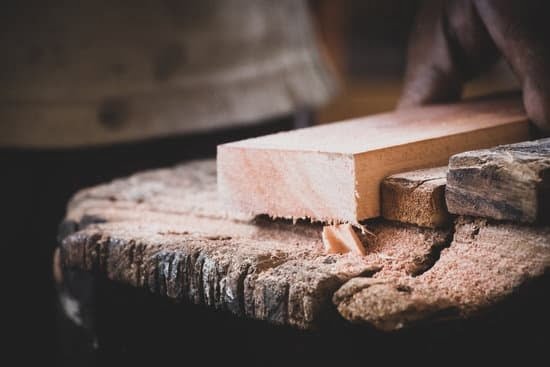Introduction
Woodworking vices come in many shapes and sizes, allowing you to work with a variety of different materials. The most common types are hand-held woodworking vices that are clamped to the workbench, as well as larger bench-mounted vices that anchor firmly into the surface of the workbench. Hand-held models have either an adjustable jaw width or multiple jaws that can expand and contract to accommodate different thicknesses of material being held, while larger vices feature either a single or multiple jaws with a fixed opening. Both kinds operate on similar principles and offer excellent control over your materials; however, only bench-mounted versions provide extra stability for large pieces like planks of wood or other heavy objects. Mounting a woodworking vice correctly is crucial for both safety and long-term use.
Differences Between Tabletop and Wall Mounted Vices
A woodworking vice is an extremely useful tool in any workshop, as it securely holds materials while they are being worked on. There are two common types of woodworking vices ” tabletop and wall mounted.
Tabletop vices are designed to be attached directly onto a workbench or other flat, stable surface. They offer a compact option for those who have limited space in their workshop but still need a reliable vice; however, if installed incorrectly or onto a weak or unsuitable surface, the vice can fail. It is important that the material used as the base for the vice be strong enough to handle all of the pressure placed on it during use.
Wall mounted vices are secured to a vertical surface such as a wall stud or support beam, making them much more secure than tabletop models and allowing them to accommodate larger and heavier pieces of work materials. They can also be adjusted easily and don’t require additional quality assurance measures like tabletop vices do when securing materials on the bench top. The downside to wall mounted vices is that they require you to have access to a structural stud or beam in your wall and the installation may take extra time and effort compared with tabletop versions.
Choosing the Right Vice For Your Project
The first step in mounting a woodworking vice is to choose the right vice for your project. Woodworking vises come in many shapes and sizes, so it’s important to consider the type of project you will be working on and the kind of material you are using before choosing one. An appropriately sized vice should allow you to securely hold pieces in place without needing excessive clamping power or running the risk of damaging delicate materials. When deciding which vice might best suit your needs, research the different options available and consult with an experienced woodworker who can provide further insights into what would be most suitable for your particular project.
Identifying the Different Components of a Woodworking Vice
A woodworking vice consists of several main components: the main frame, the screw, the spindle, and the jaws. The main frame is usually mounted to a workbench or table and will hold all of the other components. The screw is connected to the spindle which is located in the center of the frame and extends through one or both sides. This is what operates when turning the handle in order to apply clamping pressure to a work piece. On either side of the spindle are two ‘jaws’ which most commonly has a flat surface for clamping down on work pieces. Some models also come with ‘cradle jaws’ that provide increased capacity as well as offering protection against marring delicate material surfaces. The final component is typically a small retaining nut which helps secure against loosening during operation.
Tips for Measuring and Marking the Installation Site
Mounting a woodworking vice is an important step in creating a workspace that allows you to work accurately and safely. It’s essential that you measure and mark the installation site with precision before making any holes in the benchtop. To start, measure out the location of the vise on your benchtop and make sure it will fit comfortably within your available space. Once you have identified a suitable spot, use a square to mark off the area so that everything looks even and precise. Next, make sure the vise aligns with other elements in your shop such as the miter gauge slots on your table saw or other tools so you can easily swap out between tools when needed. Finally, use a drill bit slightly smaller than your mounting bolts to create pilot holes for easy installation of screws or bolts into your benchtop. Taking these extra steps ensures accuracy during installation and minimizes any mishaps during construction of your workspace.
Tools and Supplies Required For Installation
The tools and supplies required for installing a woodenworking vice include: a drill, screws, a stud-finder, masonry anchor bolts, wall plugs, a pencil, leveler or ruler, and the necessary mounting hardware that comes with the vice. For larger vises it is also recommended to use wood blocking anchored into the wall to support the extra weight of the vise. It may be useful to have construction adhesive on hand as well. First you will need to mark where you want your vise to be installed using the pencil and leveler or ruler. Use the stud-finder to determine which studs are available for attaching your vise. If there are no studs in desired location then it is recommended that you use masonry anchor bolts; otherwise you can secure your mounting hardware with the screws into the available studs. When inserting wall plugs ensure they are inserted tightly into either the drilled holes or masonry anchor bolts so that when attaching mounting hardware there are no loose connections. Finally secure your vice onto its mounted hardware following instructions provided for final installation. Wood blocking should also be considered if necessary depending on size of vice being mounted.
Preparing the Workbench or Table Surface
In order to properly mount a woodworking vice to a workbench or table surface, preparation must be taken beforehand. Begin by cleaning the surface thoroughly in order to remove any debris, dust, or nails that could potentially interfere with the installation of the vice. After cleaning is complete, make sure to measure the area and mark out where the vice will be placed in order to ensure an even and correct installation. Finally, use pilot hole drills to create pilot holes for screws that will attach the vice to the surface of the workbench or table, as well as for all components that are connected to it such as guides or rivets. Additionally, once everything is marked out and drilled, add wood glue around key areas before attaching each piece. This step ensures superior adhesion between all components and longer lasting protection from any movement or wear over time.
Steps for Installing the Vice
Drilling: Before installing your vice, you will need to drill holes into the surface it is going to be mounted on. To do this, first find a flat surface and make sure there are no other obstructions that will get in the way of drilling. Also make sure that the surface is even and free of any debris. Once the surface has been determined and prepared, use a drill bit that is sized correctly for the mounting screws you are using. Make sure to drill through both parts of your woodworking vice for a secure mounting system.
Positioning: After drilling, properly position the woodworking vice where it needs to be installed. Make sure it is aligned comfortably followed by marking where each of the mounting holes should go with a pencil or marker. Use a ruler to ensure accuracy if necessary.
Screwing in Placement: Finally, screw in the woodworking vise carefully with the correct size screws for your particular model. Tighten them snugly but not too tight as to over-tighten them and strip out the hole’s threads. With that done, your vise should now be securely fastened in place and ready for use!
Things to Consider When Securing the Vice in Place
When mounting a woodworking vice, it is important to consider what type of hardware and screws you need to securely mount it in place. It is best to use bolts for the installation so that the vice does not slip or slide out of place. Make sure that you choose screws with enough length to accommodate whatever piece you plan on using the vice for. Try using screws that are at least 3 inches long and are countersunk into the surface. This will provide a more secure grip and help prevent the vice from slipping or shifting when tightened. Additionally, you can use washers to add more stability by helping spread out the force placed on the surface of your work bench. Finally, ensure that whatever material you are working with extends past each end of the bench so that when tightened, no part of your material is put under strain or pulled too far forward due to tension. Securely attached woodworking vises can be invaluable tools when completing woodworking tasks.
Finishing Touches and Optimizing the Vice for Maximum Performance
Mounting a woodworking vice is an important part of any woodworker’s tool collection. Securing the vice to a workbench is essential for gaining greater control and more precision when working with your projects. After securely mounting your vice, it is time to make some final adjustments so that it functions optimally.
The first step after mounting the vice should be to check its alignment with the bench surface – they should both be flush. If necessary, shims can be added underneath the mounting points to create flushness between the two surfaces. Additionally, each screw that holds down the plate should cross-threaded in order to evenly spread out stress caused by tightening down the screws. This will also ensure a tight fit and will help avoid uneven pressure along one area, which can cause warping over time.
Finally, once everything is secured, you should do some test work on your projects using your new mounted vice. The movement of the vise jaws need to be smooth with no grip or sticking – this may require some lubrication depending on what material the jaws are made from. The jaw faces should have a uniform space between each other and no additional pressure needs to be applied in order for them to move freely. Once satisfied with the performance of your newly mounted woodworking vice, you are ready to enjoy long-lasting results with all your future projects!
Conclusion
Installing a woodworking vice is not an easy task to complete. It requires patience, the right tools and good understanding of the project. Taking your time to make sure you get it right is essential if you want it to last long-term. With that in mind, reflection on a successfully installed woodworking vice is essential as well.
Reflecting on the success of a newly installed woodworking vice means taking a step back and looking at all aspects of the installation process. Did you use the right hardware? Did you measure sufficiently and accurately? Did you account for movement and large pieces of material when mounting it? How about adequate power for any needed sanding or grinding associated with its installation? All of these are important questions that should be taken into consideration when reflecting on your successful project.
Additionally, this is an ideal time to assess the durability of your new woodworking vice setup. Is it able to sustain heavier pressure from larger timber? Will there be additional bracing required if so? Is everything solidly mounted and secured against unwanted movement or vibrations? Thinking through all potential scenarios will ensure that your workbench is ready for any projects ahead of it!

Hi everyone! I’m a woodworker and blogger, and this is my woodworking blog. In my blog, I share tips and tricks for woodworkers of all skill levels, as well as project ideas that you can try yourself.





